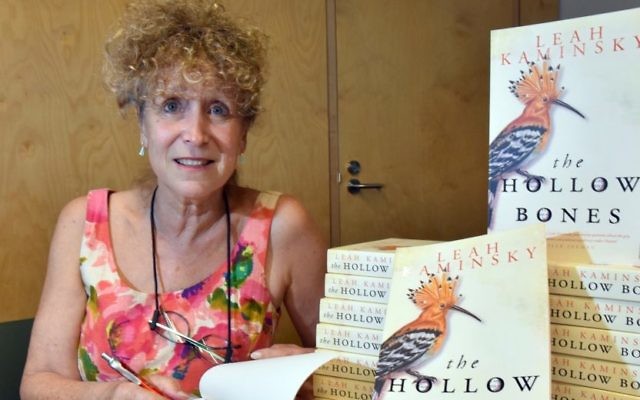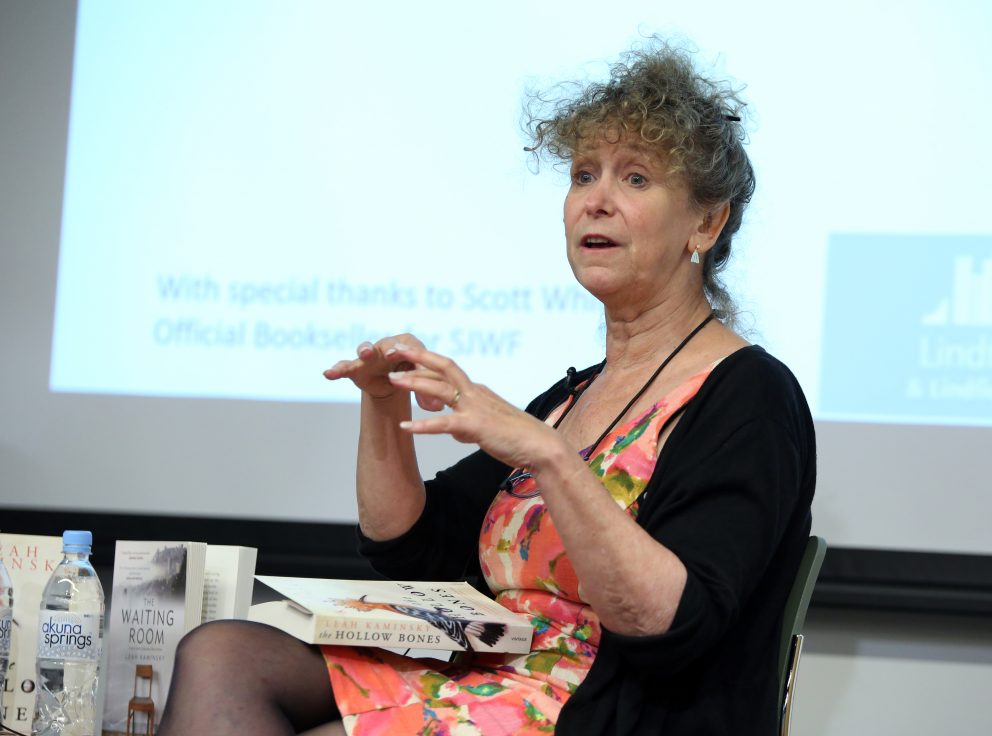Novel idea inspired by Nazi explorer
IT was while author Leah Kaminsky was researching her debut novel The Waiting Room, published in 2015, that she unearthed an amazing story that provided the inspiration for her latest novel, The Hollow Bones.
When author Leah Kaminsky discovered details about a little-known Nazi expedition to Tibet on the eve of World War II, it provided the spark for her latest novel which has just been published. Danny Gocs reports.
IT was while author Leah Kaminsky was researching her debut novel The Waiting Room, published in 2015, that she unearthed an amazing story that provided the inspiration for her latest novel, The Hollow Bones.
With launches of the book in Melbourne and Sydney in recent weeks, Kaminsky recalled that light-bulb moment of discovery half-a-dozen years ago.
“I was going down the rabbit hole of research on the internet and found an article called world ice theory, a pseudo-scientific theory that claimed the basic building blocks of the universe were ice crystals,” she told The AJN.
“As I read on, I discovered that it was the scientific platform of the Third Reich and was popular with Hitler – the Nazis had jettisoned Einstein’s theory of relativity because he was Jewish and the atom was verboten; so they embraced the ice crystals theory.”
When she relayed this story to her son, Alon, he told her to drop everything to write a new book around these fantasy Nazis expeditions which had shades of the Indiana Jones adventures.
“I became obsessed with this story and researched this book for about five years, even though as the daughter of Holocaust survivors, I had not wanted to do a book on the Shoah,” she said.
“It was confronting for me to tackle this subject. We talk about the banality of evil, and when I read about how Germans went about their normal activities while my mother was in Auschwitz and Bergen-Belsen, that was terrifying.”
In 2017 Kaminsky – a Melbourne doctor who has written and edited 10 books, mainly non-fiction including We’re All Going to Die (2016) – penned an introductory chapter about how a brilliant young German zoologist, Ernst Schafer, was recruited by Nazi general Heinrich Himmler in 1936 to lead a group of SS scientists on an expedition to the mountains of Tibet to search for the origins of the Aryan race.
Although Schafer had initial doubts, he saw it as an opportunity to rise through the ranks of the Third Reich.
During the two years Schafer prepared for the expedition, he married Herta, his childhood sweetheart, but she grew increasingly suspicious of him.
“At the time the Nazis were sending expeditions to Tibet to try to discover traces of their Nordic ancestors,” explained Kaminsky.
“My agent pitched the idea to Vintage, my previous publisher with The Waiting Room. I thought that no-one would give me a contract on the basis of one chapter and I was terrified that they would not like it, but they loved it and were very supportive.”
Between promotional tours for The Waiting Room and attending to her patients at Elwood Family Clinic, Kaminsky spent 18 months creating a hand-written draft of The Hollow Bones.
“When I write fiction, my first draft is written by hand whereas all the editing is done on computer,” she explained.
“I went plummeting into the past in my imagination. I did a lot of research reading books about Germany of the time. There was so much information available, from archives with translated German documents to material in Holocaust museums.”
The Hollow Bones is based on a true story and many of the actual names have been used. Some characters, such as the explorer’s wife, were created where there was little archival material about her.
“For all I know his wife may have been a staunch Nazi, but the fact that I don’t know gave me the opportunity to imagine her as an upstanding person rather than a bystander and to give her a ‘voice for the voiceless’.”
During the early stages of writing the book in 2017, Kaminsky received a Varuna writers fellowship and a Bundanon artist-in-residence fellowship which included accommodation for a month to focus on her writing.
“I write whenever I can – I don’t wait for the perfect conditions,” she said.
“Last year I was writing at the dining room table while my daughter was doing her VCE studies alongside me.
“I don’t get writer’s block, but I get scared and sometimes stop myself from writing. I worry about what the reader may think.”
The Hollow Bones was launched at a recent Sydney Jewish Writers Festival event, and in Melbourne at Readings St Kilda last month.
The Hollow Bones is published by Vintage, $32.99 (rrp).



comments